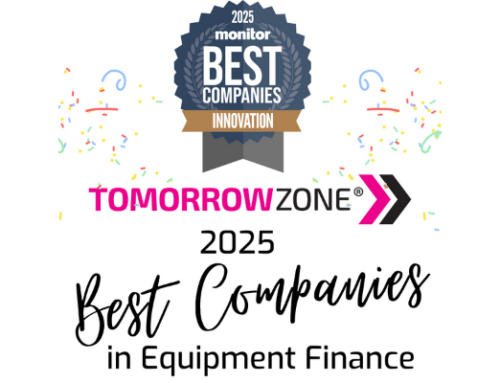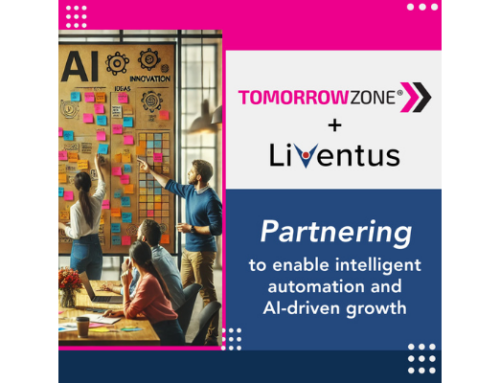
This article was originally published by NEFA in May/June 2024.
Reprinted with permission from the author.
Unlocking the power of AI in equipment finance requires practical strategies for developing real business value and a competitive advantage before diving in.
Let’s be real. I’m tired of hype and techno-babble surrounding Artificial Intelligence (AI). It’s a rapidly advancing field of technology and not a week goes by where I don’t see another announcement about some amazing new advance. AI is not new technology; it has been around since the fifties and various AI capabilities have been used in finance for years. My team and I have been leveraging AI-powered applications since 2016. It’s another tool.
AI holds vast promise in equipment finance, yet pinpointing precise use cases often stumps professionals. In industry-wide AI conversations, I’ve encountered questions – from basic inquiries such as, “What is AI?” to concerns such as, “Will AI replace me?” And the ever present, “How and where do we even begin?”
Media hype inspires fear of being left behind. With the general availability of applications, like ChatGPT, many are bravely diving in and experimenting. But they often lack clear guidance and strategies for achieving true business value for their organization. I hear leaders saying, “We know AI is out there, want to do something about it, but have no idea where to begin.”
We make it too big and inaccessible. Too often presentations about AI focus on terms like machine learning, neural networks, large language models and the like. Interesting for tech wizards, but does that help you understand what it can do specifically for your business? Not likely. Other times media personalities scare the audience with talk of robots replacing humans and apocalyptic futures. That’s not helping either. So, let’s ditch the jargon and Hollywood horror stories for a minute and get practical.
Here’s the thing. Typically, when talking about AI, everyone is saying the same words, “AI. AI. AI.” Imagine you could see cartoon-like thought bubbles over everyone’s heads during this discussion. What would you see? Each thought bubble would have a different picture. We’re all saying the same thing, but we are not seeing the same thing. No wonder we struggle when everyone has a different picture of what it means, let alone what it could mean for our companies.
Let’s step away from talk about technobabble, plastic lady robots and the terminator. Instead, let’s focus on how this exciting rapidly advancing area of technology capability can help you generate business value now and in the future.
At its core, Artificial Intelligence, “AI,” is computer programs mimicking human cognitive abilities and skills. It’s a branch of computer science, made up of a lot of different tools. It’s not a single monolithic “one-size-fits-all” type of software program (like core system approaches of the past). It’s a toolset.
Depending on the use case, I like to think of AI as either intelligent automation or augmented intelligence. AI is different from software tools of the past. It behaves differently. To successfully leverage the superpowers of this toolset, we need to adopt a new mindset. Don’t think of AI as a separate project, think of it as a vast and powerful toolset to help you automate tasks across your business.
I’ve often encountered frustrated business leaders, who invested in technology tools but didn’t really get the value anticipated. Why? Usually they started with tech first – shopped for software thinking that would solve business problems. This is typically a recipe for disappointment. Starting with a solution before understanding the problem to solve generates trouble.
Like burning money? Go software shopping first. To get a return on your tech spend, start first with the business. Understand the business problems to solve, value to create, and then strategically match business potential with tech possibilities.
We start with current state clarity before discussing technology or creating strategic roadmaps for clients. We’re taking the same approach for AI, by helping non-technical professionals understand not just WHAT AI IS. More importantly we help you understand WHAT AI DOES and specifically WHAT AI CAN DO FOR YOU across your business functions, processes, products and services.
Until you understand where the pain points and value points are across your organization structure and business processes, don’t go shopping for power tools. Let’s STOP. Step back. Identify the areas of highest friction and value creation.
Understand the problems to solve. With this clarity about your organization, you can map the power of intelligent automation to improve your business.
To do that, we need to understand the superpowers of AI and what they mean specifically for your business. The real power of AI lies in its wide-ranging capabilities or skills. These skills can enhance processes across your business – from automating repetitive tasks, to improving customer experience, to boosting employee productivity, or uncovering new revenue opportunities.
AI can be applied to enhance a variety of important tasks such as:
- Identifying, qualifying and prioritizing sales leads more accurately.
- Analyzing credit risks and detecting fraud.
- Read and understand contracts to streamline deals.
- Responding to customer inquiries through chatbots.
- Automating repetitive administrative tasks so humans can focus on more valuable work.
- Uncovering trends and insights in your portfolio data.
These practical use cases are already being deployed across the equipment finance industry today. So how can you get real business value from AI? How do you determine where to begin?
The possibilities are expansive, because within the umbrella term “AI” we can find over 70 different capabilities across 13 categories. Everything from robotic process automation to computer vision to natural language processing. That’s a lot of jargon to juggle. Instead of focusing on the technicalities, what you need to understand are the skills that AI brings to the toolset. Like a handyman’s toolbox, each tool can serve a variety of different use cases.
When multiple capabilities are applied to solving a particular business problem, the power of intelligent automation multiplies. That’s where we get a lot of value. It’s not about a single tool, it’s about learning how to apply and use a variety of tools to solve problems that are worth solving.
Start with the business process, NOT the technology. One way we do this is by facilitating workshops for non-technical professionals, to help demystify the technology and identify high value use cases. This helps teams identify the greatest potential for leveraging AI capabilities across their organization’s structure and processes without the confusion of technical jargon.
Unlocking AI’s value doesn’t require a tech background. Any leader can do it with a strategic step by step approach. Hint – It doesn’t start with shopping for software. It starts with a deep dive into your company’s core – strengths, value, obstacles and goals. Once you understand your unique high-impact opportunities, then you are equipped to find AI-driven solutions to your most valuable challenges.
Here’s how in five simple steps:
- Pains: Identify the friction points for each business function be it – process, product or service.
- Goals: Do the same as #1, but this time identify value creation points.
- Explore AI’s Capabilities. Familiarize yourself with AI’s capabilities and imagine their application in your context (we demystify this through interactive sessions).
- Ideate & Map. Connect creative AI concepts to your business functions to see which areas hold the greatest potential for AI application and design new solutions to existing challenges.
- Prototype & Validate. With an eye on technical viability, ethical considerations, data, and human impact, you can pilot a cost-effective prototype. This allows for real-world testing and iterations, assessing the potential return on investment to guide your next move.
For instance, you may see Sales has the greatest opportunity for AI application. Perhaps sales reps struggle with time-consuming manual entry after sales calls. An AI assistant could automatically capture call notes, next steps and update the contact record in your CRM.
By focusing the conversation on your business realities rather than tech buzzwords, leaders can overcome the overwhelm. At the end of the day, AI is just a powerful toolbox waiting to be leveraged for your competitive edge. But first, we must get past solely talking about what AI “is” and start exploring what it can “do” for our businesses today. When we bring the real opportunities into pragmatic focus, we can create actionable roadmaps to create value with intelligent automation.





